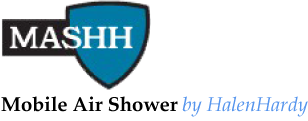OSHA made the following comments in their August 23, 2013 release concerning their proposed respirable silica rule making,
"Subsequent to completion of the PEA, OSHA identified an industry, hydraulic fracturing, that would be impacted by the proposed standard. Hydraulic fracturing, sometimes called “fracking,” is a process used to extract natural gas and oil deposits from shale and other tight geologic formations. A recent cooperative study by the National Institute for Occupational Safety and Health (NIOSH) and industry partners identified overexposures to silica among workers conducting hydraulic fracturing operations. An industry focus group has been working with OSHA and NIOSH to disseminate information about this hazard, share best practices, and develop engineering controls to limit worker exposures to silica.
OSHA finds that there are now sufficient data to provide the main elements of the economic analysis for this rapidly growing industry and has done so in Appendix A to the PEA. Based on recent data from the U.S. Census Bureau and industry sources, OSHA estimates that roughly 25,000 workers in 444 establishments (operated by 200 business entities) in hydraulic fracturing would be affected by the proposed standard. Annual benefits of the proposed 50 μg/m3 PEL include approximately 12 avoided fatalities—2.9 avoided lung15 cancers (mid-point estimate), 6.3 prevented non-cancer respiratory illnesses, and 2.3 prevented cases of renal failure—and 40.8 avoided cases of silicosis morbidity.
Monetized benefits are expected to range from $75.1 million at a seven percent discount rate to $105.4 million at a three percent discount rate to undiscounted benefits of $140.3 million. OSHA estimates that under the proposed standard, annualized compliance costs for the hydraulic fracturing industry will total $28.6 million at a discount rate of 7 percent or $26.4 million at a discount rate of 3 percent."
